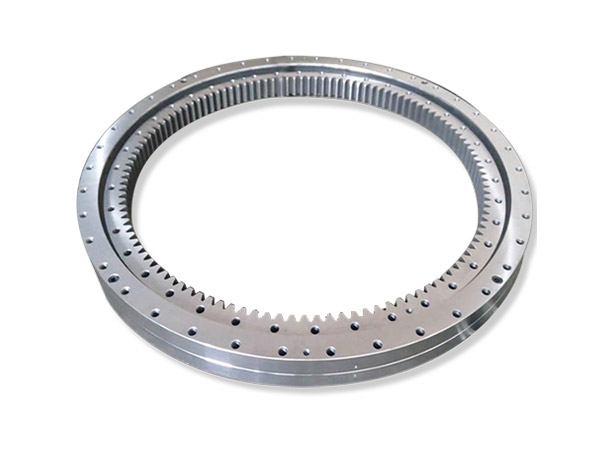¿Cuál es el módulo de engranaje de anillo de giro?
El cojinete de giro es una de las partes importantes de muchas máquinas y equipos modernos. Se llama “junta de máquina”. Mucha gente está familiarizada con varios parámetros del rodamiento giratorio, incluido el juego, el diámetro interior y exterior, el coeficiente de fricción, etc. Muchos amigos no conocen el módulo del engranaje de apoyo. El personal técnico de Longda Bearing, un fabricante de rodamientos giratorios, nos brindará una introducción detallada a este problema.
1. ¿Cuál es el módulo de la corona de giro?
La longitud del arco (engranaje) / línea recta (cremallera) ocupada por un solo diente de engranaje en el círculo de indexación (engranaje) / línea (cremallera), su longitud es π * mym es el módulo.
What does the module of the slewing ring represent: The module of the slewing ring represents the product of the tooth pitch and the number of teeth of the slewing ring gear, which is the circumference of the index circle. The gear modulus of the slewing ring determines the size of the tooth. The gear modulus is a basic parameter for the calculation of the gear size. The symbol is “m”. Gear cutters can be standardized, so that the standard modulus of gears can be standardized for mass production. Facilitate the replacement of later accessories. In the same way, “modulus” refers to the ratio of the pitch t between the tooth profiles of two adjacent gear teeth on the same side and the circumference ratio π (m=t/π), in millimeters.
If the number of teeth of the slewing ring gear is constant, the larger the gear modulus, the larger the radial dimension of the gear. The teeth of a gear with a large modulus are thick, and for two gears with the same number of teeth, the outer circle of the gear with a large modulus is larger. Therefore, the modulus of the gear in a watch is very small, and the modulus of the flywheel and transmission gear on the mechanical punching machine is large. The modulus of the two meshing gears must be the same. Modulus is the basic parameter of gear design, and it is used in many calculations of gear design.

2. Reasonable selection of gear module
When designing a gear, one of the important parameters is this modulus. The gnawing of the gear will produce gnawing pulsation. The main reason is that it has a great relationship with the elastic deformation of the gear teeth. It is a basic part of the gear design. Parameter-gear modulus, if it is a relatively large modulus (that is, a gear with a relatively large size), it will also have a relatively large load-bearing capacity. The modulus parameter is inversely proportional to the degree of bending of the gear teeth. The increase of the modulus means that the rigidity of the gear teeth is improved, so that the elastic deformation of the gear teeth will not be great when the gnawing transmission is carried out, which greatly reduces the impact force formed by the gear teeth, thereby achieving The purpose is always greatly reduced. Therefore, from this point of view, the modulus should be increased appropriately, but the error generated when machining gears is also related to the modulus. If the modulus is increased, the tooth profile and pitch will also be increased. At this time, the error of gnawing noise will also increase accordingly, so the choice of modulus should be determined according to the specific situation.

In the case of keeping the modulus unchanged, the diameter of the gear is proportional to the number of teeth, so the change of the number of teeth will also change the bending amount and elastic rigidity of the gear teeth: the strength of the noise generated by the sound source is not only related to the energy of the vibration source It is related to the size of the radiation area. If the radiation area is increased, the radiation power will also increase. Increasing the gear diameter will increase the noise radiation area, which will greatly affect the gear. Effective control of noise.
Por lo tanto, en el diseño relevante, dentro del rango permisible de asegurar la resistencia del engranaje, el número de dientes pequeños y el módulo pequeño deben usarse tanto como sea posible, y la selección razonable de materiales y métodos de tratamiento térmico pueden combinarse promover el aumento de la fuerza de los dientes del engranaje, reduciendo así el diámetro de los dientes del engranaje. Entonces, se logra el propósito de reducir el ruido del engranaje.


